
USA & CANADA (901)
Latest News
Air Canada's cancellation of regional flights will gut remote communities
Sunday, 06 September 2020 01:13 Written by theconversation 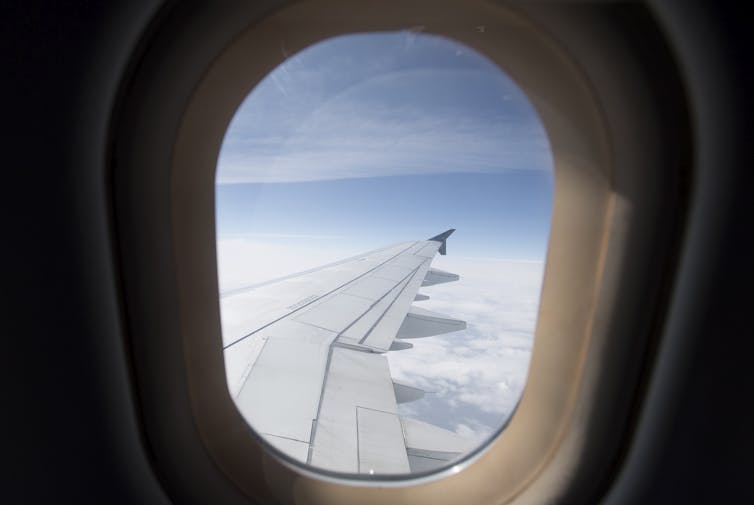
Isabelle Dostaler, Memorial University of Newfoundland and Mohamed Khomsi, Université du Québec à Montréal (UQAM)
Like the global aviation industry, Air Canada has been hit hard by the COVID-19 pandemic and was forced to abandon 30 regional routes earlier this summer.
More cuts could be announced in the coming months.
This is a catastrophe for several remote Canadian communities, as it threatens their right to be connected to the national transportation system and severely impairs regional economic development.
The COVID-19 crisis is providing an opportunity to rethink transportation policy in our country. It also forces us to evaluate the extent to which the free market economy is the best mechanism to structure air transport in a country characterized by great distances and low population density.
Began under Jimmy Carter
The deregulation of air transport started under President Jimmy Carter in the United States at the end of the 1970s. Canada did not escape this movement: Air Canada remained a Crown corporation until 1988, when it became a publicly traded company.
It’s remarkable that in spite of the drastic change in its ownership structure, Air Canada is seen as the national airline in the hearts of many Canadians. However, the cavalier way in which the company announced regional service suspension — with some local authorities learning the bad news in the media — was a sharp reminder that Air Canada’s only social responsibility is towards its shareholders. Regional development is no part of its mission.
In fact, Air Canada’s shareholders were probably pleased with the decision to cut regional routes and would welcome additional suspensions if they’d limit financial losses.
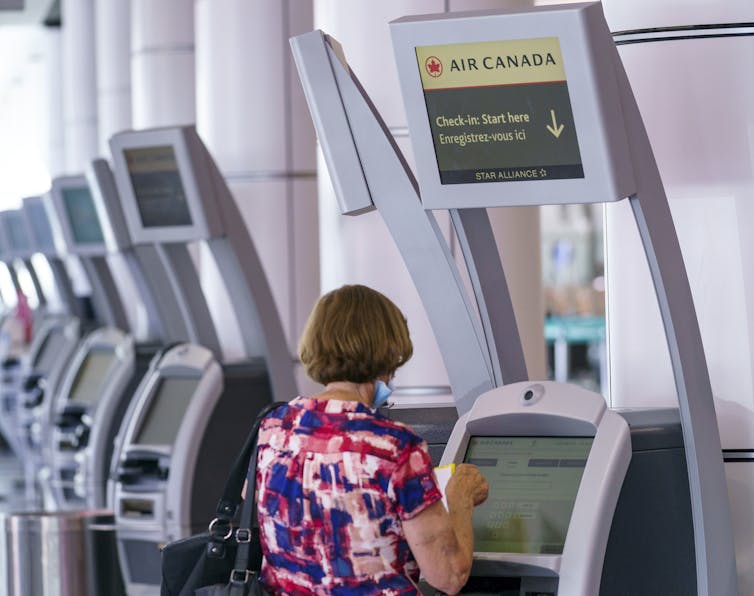
Air travel deregulation resulted in the creation of the hub-and-spoke system: large legacy carriers operated from main airports (the “hubs”), fed by several regional flights carrying passengers from secondary airports (the “spokes”). The hub-and-spoke system protected legacy carriers from new entrants mainly because their passengers had access to seamless multinational networks.
Despite the threat that low-cost carriers started to pose in the late 1990s and early 2000s, the hub-and-spoke model is alive and well today. The main reason why a carrier like Air Canada offers connections between Québec’s Magdalen Islands and Montréal or between Newfoundland’s Deer Lake and St. John’s, for example, is to feed its Montréal or Toronto hubs.
Willing to lose money
In periods of economic growth, when international flights are profitable, large carriers are willing to lose money on regional routes in the hopes of snagging regional traffic heading for international destinations.
However, the COVID-19 pandemic made it financially impossible for Air Canada to continue to offer all its regional connections. The pandemic has therefore shed light on the limits of a deregulated air transportation market in a country like ours.

We conducted major research projects for the Québec Department of Transport in 2008 and 2019, in addition to helping the Québec government prepare for the 2018 Regional Air Transport Summit. So we’re very familiar with regional air transport challenges in our country, which are exacerbated by the quasi-monopoly position enjoyed by Air Canada.
Like any provincial government, Québec does not have regulatory authority over air transit in the province. However, the province offers a number of programs to mitigate the negative impact of the quasi-monopolistic situation.
These programs have had mixed results.
For example, only six per cent of those from remote communities who we surveyed in 2019 indicated that they had travelled on a regional flight and benefited from the Québec Fare Reduction Program, an initiative designed to make regional flights more affordable to users.
Policy recommendations
Our research work led us to formulate a number of policy recommendations, including putting in place conditions that would allow small entrepreneurial carriers to thrive and weaken Air Canada’s monopoly position.
It has become clear while surveying or interviewing people in remote communities that the travelling public is often unaware that other options exist beyond Air Canada. It would be relatively easy for provincial governments to organize marketing campaigns to promote regional tourist attractions together with the air service offered by small entrepreneurial carriers.
Participants in the consultations conducted in preparation for the 2018 Regional Air Transport Summit even suggested setting up a regional loyalty program or the creation of an umbrella brand (similar to airline partnerships such as the Star Alliance) under which regional carriers could be grouped.
Fixing a floor price to prevent Air Canada from engaging in price wars that small regional carriers can never win, as well as removing provincial sales taxes on flights offered by small carriers, could also have a positive impact on the sustainability of the regional air transportation network.
Trying to make their regions attractive
Some remote communities we heard from when conducting our research stood out for their efforts to stimulate their local economies and develop tourism in order to make their region attractive to air carriers.
Other communities argued that regional air transport should be considered a public service and subsidized the same way urban public transportation systems are. But a fully subsidized regional air transport system is unrealistic, because travelling to and from remote communities is expensive and those costs cannot be entirely borne by taxpayers.
However, the free market is currently threatening the right to transportation of those living in remote communities, as well as their economic vitality. Sound federal, provincial and municipal policies that create synergies between economic and tourism development, as well as sustainable mobility, are greatly needed.![]()
Isabelle Dostaler, Dean of the Faculty of Business Administration, Memorial University of Newfoundland and Mohamed Khomsi, Professor, Tourism Governance, Université du Québec à Montréal (UQAM)
This article is republished from The Conversation under a Creative Commons license. Read the original article.
Silencing whistle-blowers on farms conceals animal and employee abuse
Wednesday, 02 September 2020 12:13 Written by theconversation 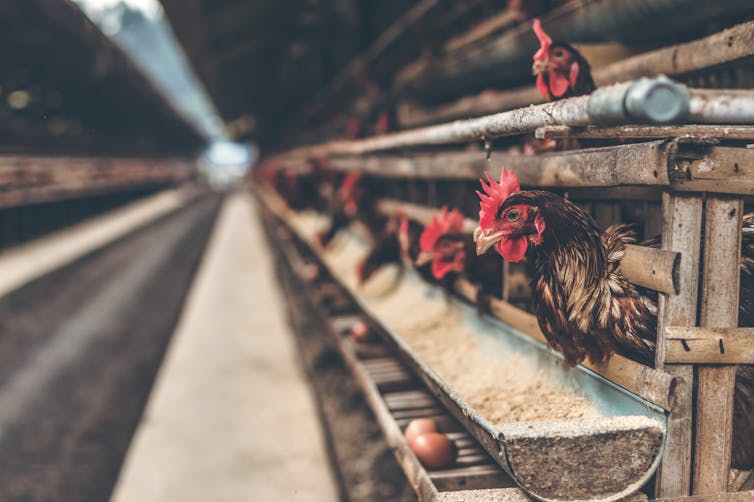
Lisa Kramer, University of Toronto
It will take time for authorities to determine whether the recent death of a woman outside a slaughterhouse in Burlington, Ont., was an accident or homicide. We don’t need to wait for the outcome, however, to know why the animal welfare protester died and what must change to prevent future harm — not only to activists, but also to consumers and businesses.
The events that led to Regan Russell’s death were set in motion last month in the Ontario legislature, when lawmakers passed a sweeping “ag-gag” law that prevents journalists and other investigators from entering animal agriculture facilities to expose illegal activities such as animal cruelty, employee mistreatment or health and safety violations.
Days later, Russell was protesting this same law on public property when she was struck and killed by the driver of a truck transporting pigs in what seems a cruel twist of fate.
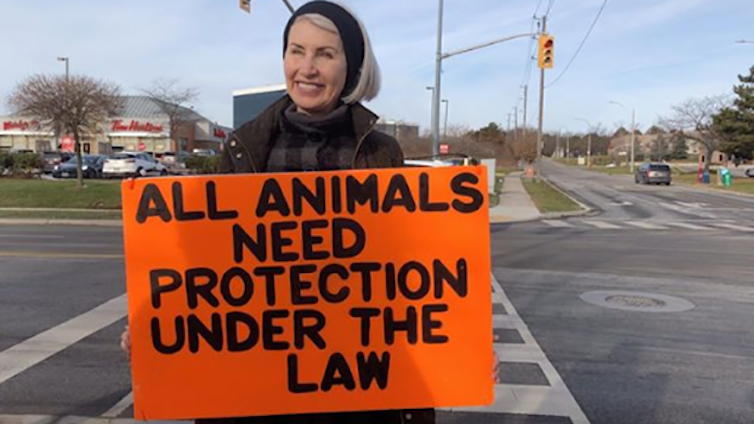
Canadians prefer openness
Canadians certainly have an interest in ensuring activities that take place on farms, on transport trucks and in slaughterhouses adhere to our laws and to our sense of decency. Opinions are strikingly aligned on the matter.
In a June 2020 survey of more than 1,000 Ontario residents, 84 per cent said they believe conditions in meat-processing plants should be transparent to the public. Similar numbers said whistle-blowers should be able to expose problems on farms and in food-production facilities related to working conditions, animal abuse and food safety.
But when the newly enacted ag-gag law, Bill 156, comes into force it will ensure the opposite. Just like a similar law introduced in Alberta last year, Ontario’s new legislation will prevent whistle-blowing employees from collecting the type of video evidence that in the past has led to the prosecution and conviction of lawbreakers across Canada, including agricultural workers abusing animals.
This law will also interfere with workers’ rights advocates and journalists who seek to uncover evidence that employees are being mistreated, which these days could prevent authorities from being made aware of cases where slaughterhouse workers, who already face a high risk of COVID-19 infection, may be forced to work without adequate personal protective equipment.

Likewise, this law could prevent employees from exposing information that would help public health authorities pinpoint the origin of pathogens that cause avian flu, swine flu and other infectious diseases that are known to arise in animal confinement facilities.
Additionally, this law will prevent people like Russell from exercising their legal rights to peacefully protest on public property, a right protected by the Canadian Charter of Rights and Freedoms. In her decades of social activism, Russell had exercised that right by advocating for a wide range of social causes and was especially vocal in her opposition to the mistreatment of animals raised as food.
Consumers, businesses look to future
Because many people share Russell’s concerns about animal welfare, and also worry about the large environmental footprint and health risks associated with eating meat, demand for plant-based products has rapidly increased in recent years. Many food-production firms are shifting away from animal-based products, diminishing the purported role for ag-gag laws.
The CEO of Maple Leaf Foods, Michael McCain, projected in 2018 that the tastes of consumers would continue drifting away from meat, signalling his company’s intention to continue satisfying those tastes by producing more plant-based proteins. “We view ourselves as a protein company,” he stated.
The following year, he announced plans to build a $310 million plant-protein food processing facility.
Maple Leaf Foods is not alone in evolving away from animal agriculture. Some of the largest meat-production companies in the world, including colossal Tyson Foods, have introduced plant-based products to their menus of offerings.
One of the hottest new stocks of 2019 was the vegan food-production company Beyond Meat. And the newest plant-based meat company to go public, Canadian firm The Very Good Food Company, saw its share price surge above its initial value in its early days of trading last month.
The federal government stands ready to encourage businesses to adapt to consumers’ preferences. Prime Minister Justin Trudeau recently announced about $100 million in funding for a Winnipeg facility that “will be a world leader in plant-based proteins, and will create good jobs in a fast-growing field.”
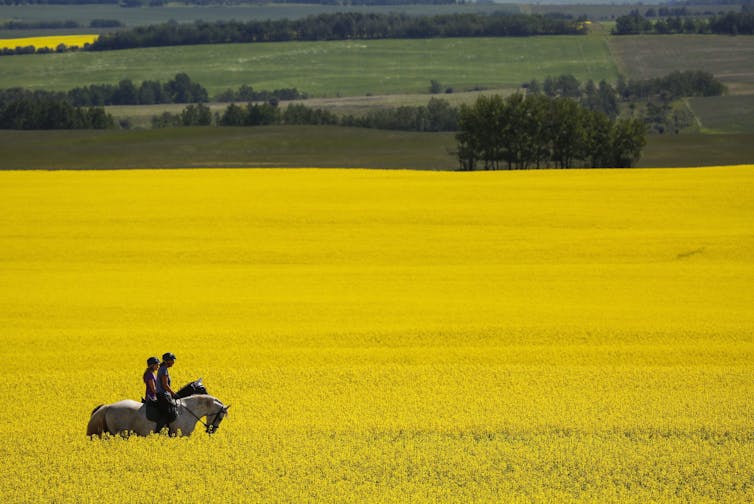
This adds to Canada’s Protein Industries Supercluster, an ambitious federal program that aims to add more than $4.5 billion and 4,500 jobs to the Canadian economy over 10 years by supporting crops used in the plant-based foods market. It’s notable that a key intention of the protein supercluster is to improve transparency on Canadian farms, something Ontario’s Bill 156 directly erodes.
Backward-looking policies have no place in our country. Canadian businesses cannot compete on the world stage if consumers do not trust the safety of their products.
But the opacity enshrined in ag-gag laws destroys consumer confidence by its very nature, to the detriment of Canadian companies, their employees and their customers. It will also hide the cruel treatment of animals and workers, which the factory farming industry would do well to eradicate.
Regan Russell died trying to spread that message. I, for one, received it. The ag-gag law must be repealed.![]()
Lisa Kramer, Professor of Finance, University of Toronto
This article is republished from The Conversation under a Creative Commons license. Read the original article.
The verdict: Canada's legalization of cannabis is a success
Wednesday, 02 September 2020 12:07 Written by theconversation 
Bill Bogart, University of Windsor
A highly regarded British think tank focused on reforming drug laws thinks Canada’s legalization and regulation of cannabis has gone well.
Transform has been monitoring Canadian reform efforts for some time, and advised the Canadian government and some provinces on how to develop regulations prior to legalization. Its positive views of Canada’s initiatives is a significant contribution in assessing our journey away from criminalization of simple possession and use of recreational drugs.
There have been a number of efforts at assessing our first year of legalization and beyond. Not all of them have been as positive as Transform’s evaluations.
The think tank’s accounting is sophisticated but also provides a primer of Canada’s experiences with legal cannabis, the provision of which was deemed an essential service in Ontario during the early days of the COVID-19 pandemic.
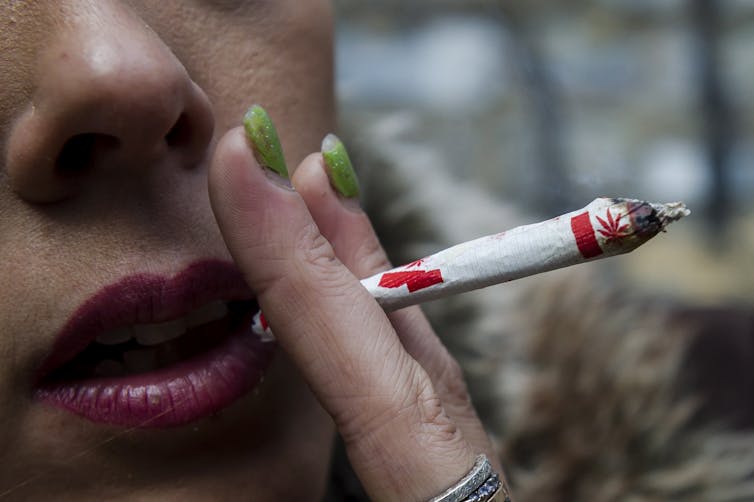
Transform’s assessment delves into the fundamentals — growing, processing and producing. The diverse ways the drug is sold to consumers in the provinces and territories is summarized succinctly and clearly.
The report also wades into contentious issues, including impaired driving, protecting youth and confronting the illicit market. Let’s look at the social justice issues implicated in the shift away from criminalization.
Social equity issues
As it became clear that change would happen and the necessary federal and provincial/territorial legislation would be enacted, issues affecting marginalized groups came to the fore. Transform looked at governments’ failure to adequately address them.
The first issue involves social equity measures. These proposed initiatives aim to compensate, to some degree, the harms suffered by members of groups because of criminalization and enforcement measures, and penalties that disproportionately affected them.
Read more: As cannabis is legalized, let's remember amnesty
The report also points out that Indigenous communities are given the ability to refuse the sale of cannabis on reserves, and says there hasn’t been enough of an effort to include Indigenous Peoples as participants in the cannabis industry as part of economic improvement initiatives.
More generally, the report documents efforts in American states where cannabis is legal to give minority groups, including Indigenous communities, opportunities to participate in the industry.
Whether such initiatives are the best and only way to go is debatable. Some who have been negatively impacted by discriminatory practices in the enforcement of drug laws might not want to be involved with the cannabis industry now as part of social equity measures.
There could be other ways to support those affected by discriminatory practices. For example, a fund established from a portion of cannabis industry tax revenues could provide grants to qualified applicants for a wide variety of opportunities. In any event, these social equity issues should no longer be ignored.
Amnesty
Transform also raised the need for amnesty for those convicted of simple possession and use when cannabis was illegal.
Criminal records dog these individuals, affecting everything from employment opportunities to travel to foreign countries.
Canada did enact special programs for pardons for related offences in conjunction with reform of cannabis laws. But these changes have proven inadequate because of cost and other barriers, and because convictions still persist and cannot be denied by affected individuals when questioned.
There have been very few applications under this process. Instead, as Transform emphasizes, amnesty is needed that compels governments to erase convictions or, at least, seal relevant records. Such initiatives are underway in some U.S. states, notably California.
Read more: Canada's new lacklustre law for cannabis amnesty
On the whole, Transform lauds Canadian efforts at reform. Others have not been so kind. Take, for example, an article in The Guardian in April ominously headlined: “How did it go so wrong?”
The story documented legitimate shortcomings regarding access to the legal market (for example, not enough retail outlets, especially in Ontario), the fight to eliminate the illicit market and the problems faced by the cannabis industry to turn profits. It characterizes Canadian legalization as “driven by vulture capitalism and wishful thinking” in a “mix of greed and naivete.”
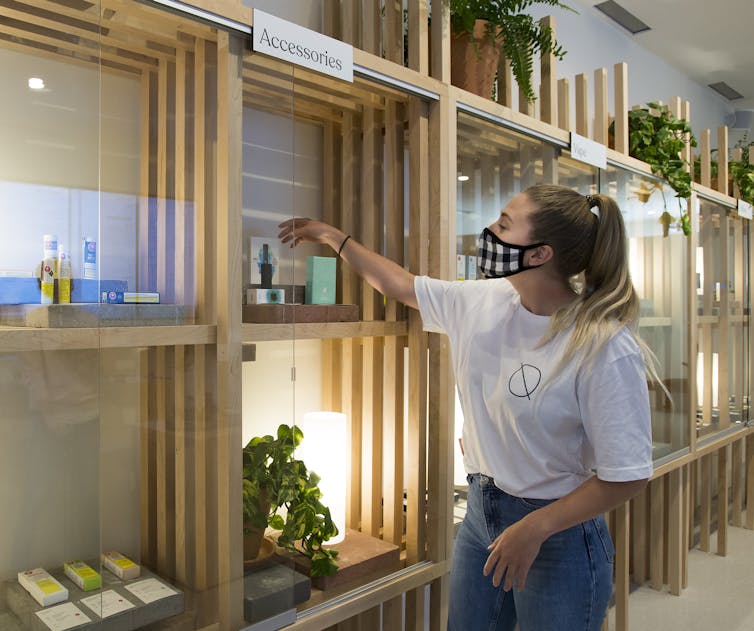
Canada still has a long way to go to ensure cannabis legalization is successful.
But the harm caused by criminalizing the use of other drugs is a different story. This month the Canadian Chiefs of Police endorsed the decriminalization of the personal use and possession of all drugs. Is another chapter unfolding?
Bill Bogart, Distinguished University Professor and Professor of Law Emeritus, University of Windsor
This article is republished from The Conversation under a Creative Commons license. Read the original article.
Serious Outrage As Police Kill Another Black Man In US (Photo)
Wednesday, 02 September 2020 04:31 Written by toriPopular News
Nigerian American arrested for jogging, wrongly detained for two days
Monday, 31 August 2020 17:15 Written by OASESNEWS 
•Arrested Nigerian American Mathias Ometu
‘You’re choking me!’ Black jogger, 33, screams as he’s forcefully arrested in San Antonio and then detained for two days in case of mistaken identity -despite victim in the case telling cops they had the wrong man.
Nigerian American Mathias Ometu, a 33-year-old insurance adjuster, was arrested by police for “jogging while black’ in San Antonio, Texas, on Tuesday.
Authorities said they were in the area looking for a domestic violence suspect at and had “reasonable suspicion” that Ometu matched the description.
Ometu, who was jogging at the time, refused to give officers his name and date of birth after they arrested him.
The Texas Penal Code states that a person being detained or questioned by police is not required to provide identifying information.
Cell phone footage showed officer forcing Ometu into the back seat while he screamed “you’re choking me” several times.
The victim told officers that Ometu was not the suspect, but he was still detained and charged with assault of an officer.
Ometu was then transported to Municipal Court for “identification purposes,” according to the report. He was charged with two counts of assault on a peace officer.
He was initially assigned to a court-appointed defense attorney who died in 2011. Court records show that another lawyer has since been appointed to him.
Ometu’s arrest for “jogging while black” came after the February killing of Ahmaud Arbey, a 25-year-old Georgia man who was shot dead by two white men while jogging through a neighborhood. The suspects said they suspected him of being a robber, despite having no concrete evidence.
A police department spokeswoman said in a statement released Thursday that the incident was under administrative review.
“The individual contacted was in close proximity to the call, and he matched the physical and clothing description provided by the victim,” the statement said, which did not indicate whether their intended suspect had been apprehended.
Rodriguez, who witnessed the incident with Maas, told CNN that at no time did Ometu appear aggressive with the officers.
Additional footage taken by Rodriguez shows Ometu handcuffed and calmly standing by the police cruiser for around six minutes before officers begin pushing him.
Rodriguez said she was walking her dog around 2pm that day when she saw Ometu jogging.
Suddenly, police arrived and approached Ometu to speak with him. After about 20 minutes they placed him in handcuffs.
Rodriguez then walked to a nearby office where Maas was working and knocked on the window to get his attention. The pair then began filming the incident.
“His crime was jogging while black. They made up any reason to harass this guy,” Maas wrote on Facebook regarding the footage.
Maas also alleged that the officers used Tasers on Ometu, but that was not shown in video footage.
The couple said the incident lasted around an hour, but they only captured 20 minutes of the encounter.
The Bexar County District Attorney’s Office is waiting for the police department to finish their investigation before they “review all evidence and decide how to proceed with any potential criminal case,” attorney Joe Gonzales told CNN.
In a statement, the San Antonio Police Department defended the action of its officers.
“The suspect fled before police arrived, but the victim provided officers with the suspect’s information and officers also obtained information that the suspect was also wanted for a felony robbery warrant,” the statement read.
“The individual contacted was in close proximity to the call and he matched the physical and clothing description provided by the victim.
“That was the only reason he was stopped and questioned as the officers legitimately believed he was the wanted suspect.”
The department added that video of the incident will be reviewed to ensure proper protocol was followed.
San Antonio Mayor Ron Nirenberg spoke out against the incident and said he wants an investigation conducted.
“I am seeking a full accounting of this incident, which is currently under investigation. We have to approach this situation seriously because every single resident deserves fair and equitable treatment from their city,” he wrote on Twitter.
Julian Castro, a former presidential hopeful, also publicly condemned the incident on Twitter.
“Mathias Ometu was jogging in San Antonio and was wrongfully detained by SATXPolice,” he wrote.
Victor Ometu, Mathias Ometu’s father, said that he contacted his son’s friend, who paid a portion of Mathias Ometu’s bail, which was set at $20,000.
Mathias Ometu was released Thursday, officials said.
“You can’t just arrest someone for anything,” Victor Ometu said. “I imagine he’s scared. He’s never been in trouble before.”
- Based on reports by Daly Mail (UK).
Alberta oil shipped through Panama Canal to Atlantic Canada to avert COVID-19 threat to energy supply
Monday, 31 August 2020 03:49 Written by theconversation 
Larry Hughes, Dalhousie University
On July 20, the tanker Cabo de Hornos delivered an estimated 450,000 barrels of crude oil to the Irving Oil refinery’s Canaport storage facilities in Saint John, N.B.
What made Cabo de Hornos’s delivery different was that it was the first time crude oil had arrived in Saint John by ship from Alberta. It came via the Trans Mountain pipeline to the Westbridge Marine Terminal in Burnaby, B.C., and then through the Panama Canal.
By the end of April next year, a second tanker will arrive at Canaport carrying 350,000 to one million barrels of Western Canadian crude oil. In this case, the oil will have come via pipeline from Alberta to a crude oil exporting terminal in Texas or Louisiana.
For most of the Saint John refinery’s 50 years of operation, it has relied on crude oil from sources outside Canada, including Saudi Arabia, the United States, Norway and Nigeria, to meet most of its demand. In 2019, about 80 per cent came from non-Canadian sources, with the remainder from offshore Newfoundland and Labrador by tanker and Western Canada by rail.
Any event — such as a COVID-19 outbreak in any of these oil-supplying countries — that disrupts the flow of crude oil to the refinery threatens the energy security of most people in Atlantic Canada.
Crude oil supply
Relying on non-Canadian suppliers has never been an issue for the refinery. Even during the low points of Canadian-Saudi relations in the summer of 2018 and periods of increased tension in the Middle East, Saudi Arabia has been one of its principal suppliers. (Part of this may be attributable to the fact that about 60 per cent of the refinery’s output is shipped to New England and U.S.-Saudi relations could be affected if Saudi Arabia’s supplies to the Saint John refinery were disrupted.)
However, COVID-19 is a concern for those running the refinery. In April, Irving Oil applied to the Canadian Transportation Agency to use tankers from unspecified, non-Canadian suppliers for these two shipments, as per the requirements of the Coasting Trade Act. In each application it was made clear that the company’s overriding concern was the impact COVID-19 could have on about 80 per cent of its crude oil supply shipped from non-Canadian sources.
This is a legitimate concern.

Globally, the health of ships’ crews has become an increasingly critical issue since the start of the pandemic. In many countries, fear of COVID-19 on ships has stopped shipboard crews from disembarking and returning home to their families, and new crews from boarding ships.
This is forcing shipboard crews to continue working well beyond the end of their contractual period of employment. Reports of mental anguish, self-harm and suicide have also been reported.
A COVID-19 outbreak in an oil-producing country or on board a tanker could disrupt the flow of crude oil to the Saint John refinery and, consequentially, disrupt the flow of its refined products to most of Atlantic Canada and New England.
Oil consumption in Atlantic Canada
Atlantic Canadians consume about 20 per cent more gasoline per capita than Canadians as a whole. With limited access to natural gas, about 31 per cent of the energy used for space heating in the region comes from heating oil (compared with 5.1 per cent nationally).
Irving Oil’s decision to find alternate ways to access Western Canadian crude oil from British Columbia via the Panama Canal or the U.S. Gulf Coast will undoubtedly increase the diversity of its supply. However, Irving’s concerns over COVID-19 and its international suppliers and shippers are equally applicable to Western Canada’s oilfields and any ships used to carry the crude oil.
To be fair, Irving has few other choices: crude-by-rail is a possibility, but there is limited capacity in its rail yard; TransCanada killed the Energy East project and even if it could be revived, it would take years to complete.
Read more: Regulations alone didn't sink the Energy East pipeline
While restructuring Atlantic Canada’s energy system to become less reliant on oil is the obvious answer, there are few short-term solutions. For example, although Churchill Falls could meet part of the region’s energy demand for electricity, heating and transportation, it will not be available until 2041, when the electricity sales contract between Newfoundland and Labrador and Québec comes to an end.
Without access to low-cost electric vehicles and easily accessible charging stations, gasoline will remain the principal fuel of choice for transportation in Atlantic Canada. On the other hand, there are alternatives for space heating, notably electricity and wood, each of which already meet about 30 per cent of the region’s residential demand for heating.
In the meantime, Atlantic Canadians can hope for an effective, widely accepted vaccine and prepare for periodic oil supply disruptions.![]()
Larry Hughes, Professor and Founding Fellow at the MacEachen Institute for Public Policy and Governance, Dalhousie University
This article is republished from The Conversation under a Creative Commons license. Read the original article.
Empathetic incompetence? Ontario's Doug Ford government at 2 years
Saturday, 29 August 2020 13:24 Written by theconversation 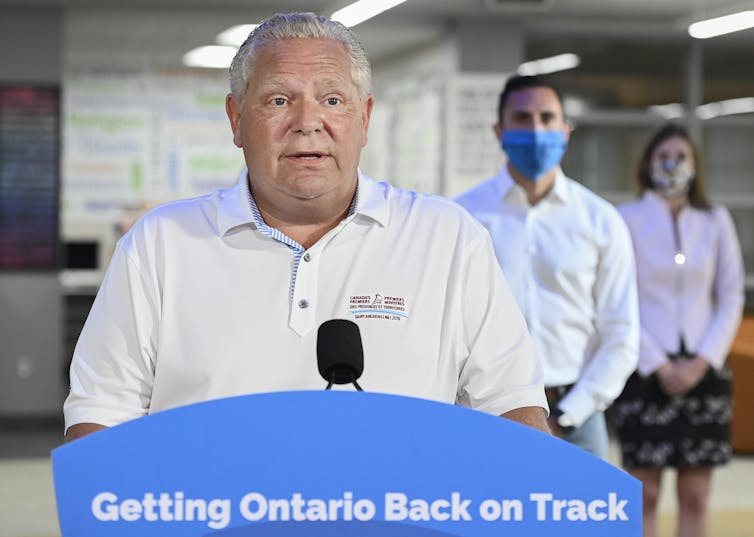
Mark Winfield, York University, Canada
Now into the third year of its mandate, the Ontario government under Premier Doug Ford is being assessed for its handling of the COVID-19 crisis. The impressions are mixed.
On a personal level, the premier’s responses to the pandemic have generally been regarded favourably. He has at times conveyed deep personal empathy for those affected by COVID-19 and their families.
At the same time, the province has struggled to provide effective responses to the COVID-19 crisis, seemingly uncertain of what direction to take or of the scope of its own authority and capacity.
Controversies over the government’s plans to reopen elementary schools without reducing class sizes are the latest in series of stumbles in managing the crisis.
‘Have fun’
The Ontario government was initially slow to recognize the scope of the pandemic and the risks it posed. COVID-19’s global spread was apparent by early March, yet the premier confidently advised Ontarians to “go away” and “have fun” over the March break holiday.
By the time a provincial lockdown was imposed on March 18, most of those travellers were already back in Ontario. Some brought the virus with them, where it began to spread into the community, most critically to long-term care facilities.
The disaster that ensued in long-term care centres has been well-documented. More than 1,450 long-term care residents have died of COVID-19. More may have perished due to neglect as portions of the care system, particularly in for-profit facilities, effectively collapsed.
Read more: The coronavirus exposes the perils of profit in seniors' housing
The province was again slow to respond, despite well-known risks in the sector, especially its increasing reliance on part-time itinerant staff, and more general concerns over the quality and level of care being provided in long-term care facilities. Many of these issues had been highlighted less than a year earlier in the July 2019 report of the inquiry into the murders of nursing home residents by nurse Elizabeth Wettlaufer.

The province’s promise of an “iron ring of protection” for care facility residents failed. The government then studiously avoided a formal judicial inquiry into the COVID-19 care home disaster, opting for a less formal commission, which will lack public testimony, under oath, by key officials in system.
Seasonal workers
Early warning bells were also sounded around the potential risks to large numbers of temporary foreign farm workers employed in Ontario. Crowded, unsanitary living conditions, as well as the vulnerability to deportation for workers who lack permanent resident status if fired by their employers, were again well-known long before the arrival of COVID-19.
Yet the province failed to take proactive action, despite having substantial legal authority to set and enforce standards and practices for farm operators under occupational health and safety, public health and agricultural legislation.
Those responsibilities were left to the ad hoc efforts of local health units, most notably in Windsor-Essex. The result was more than 1,000 cases of COVID-19 among temporary farm workers and at least three deaths.
School reopenings
The government’s latest missteps have been around the reopening of schools in September. Major concerns are being raised by health experts, school boards, teachers and parents about the government’s approach to opening elementary schools.
Read more: Coronavirus outbreaks are inevitable as Ontario plans to reopen schools
The government seems to be proceeding on a largely business-as-usual model with normal, pre-pandemic class sizes. Personal protective equipment will be provided for teachers, and masks are required for students in grades 4 to 8, and are recommended for younger children.
But health experts and public health authorities have highlighted the need to reduce class sizes to control COVID-19 in schools. With smaller classes, any outbreak would be limited to a smaller group. Teachers are also far more likely to be able to manage the behaviour of their students in smaller classes.
The Ford government, overall, has presented an image of deep concern and empathy for the victims of the pandemic. But it’s flailing when it comes to delivering the kinds of concrete, proactive measures that COVID-19 requires. The premier’s own management style remains more like that of a city councillor — someone who is genuinely trying to help his constituents, but suggests he’s up against forces beyond his control.
‘Final sign-off’
This is an odd stance for a premier who once declared that he had “final sign-off on everything in this province.” At times the government has seemed unable to grasp the scope of the many tools at its disposal to deal with the pandemic.
The province is spending nearly $6 billion annually to keep hydro rates artificially low. In that context, it should be able to find the means to implement a safer and more effective plan for reopening public schools, where there are significant risks of triggering a second wave of COVID-19.
Despite its challenges in dealing with COVID-19, the province has been quietly efficient in the ongoing pursuit of its pro-business agenda. In fact, in many ways, that agenda has accelerated under the cover of the pandemic.
The land development industry continues to be a favourite of the government. Proposed revisions to the Growth Plan for the Greater Golden Horseshoe region released in June would compel municipalities to make land available to developers to accommodate doubtful projections of population growth to 2051.
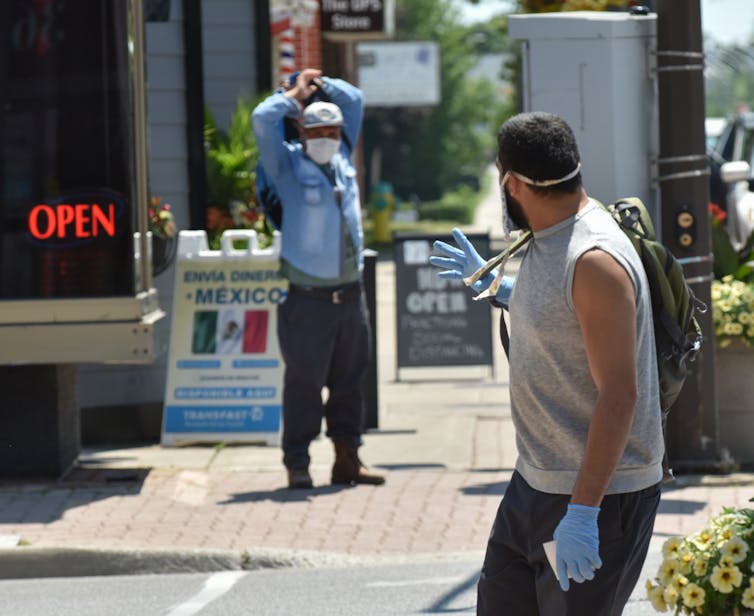
The same proposed amendments would permit aggregate extraction operations (for example, gravel pits and quarries) in the habitat of endangered and threatened species. The province’s environmental assessment process, in place since the mid-1970s, was largely dismantled through the government’s omnibus “Economic Recovery Act” pushed through the legislature in July.
Read more: The erosion of Ontario’s Endangered Species Act threatens iconic Algonquin wolf
Where the government’s combination of empathy, administrative ineptitude and responsiveness to whatever developers and other industries seem to ask of it will lead is unknown. But that doesn’t serve the interests of Ontario residents very well. Nor does it provide a very strong basis on which to head into an election less than two years away.
Mark Winfield, Professor of Environmental Studies, York University, Canada
This article is republished from The Conversation under a Creative Commons license. Read the original article.
Trump accepts the nomination from the White House lawn, portraying a nation in crisis and himself as its hero
Saturday, 29 August 2020 01:23 Written by theconversation 
Jennifer Mercieca, Texas A&M University
Donald Trump delivered his second Republican Party acceptance speech from the White House on Aug. 27, shattering the norm that presidents do not campaign at the public’s expense, and describing a nation in crisis.
Trump spoke of internal enemies intent on destroying the American way of life and offered himself as the nation’s only protection against widespread rampaging violence.
It was a speech meant to draw a stark contrast between Trump’s view of America and what he portrayed as his Democratic opponent Joseph Biden’s view of America.
I’ve been analyzing Trump’s rhetoric since 2015. I wrote about Trump’s appeal to authoritarian voters at his 2016 nomination acceptance speech in my new book, “Demagogue For President: The Rhetorical Genius of Donald Trump.”
This year’s speech was a repeat performance.
Trump repeatedly tried to create a sense of urgency about his reelection, calling this the “most important election in the history of our country.”
Trump said that “if the left gains power, they will demolish the suburbs, confiscate your guns, and appoint justices who will wipe away your Second Amendment and other Constitutional freedoms.”
“No one will be safe in Biden’s America,” Trump warned.
Biden borrowed from Trump’s playbook, tweeting out a response to the speech.
‘A wicked nation’
The months long protests against police violence and systemic racism against African Americans, the movement to pull down Confederate monuments, and even The New York Times’ 1619 Project provided the background for Trump’s attack on Biden’s view of America and his defense of his own record in office.
Trump claimed that “Joe Biden and his party repeatedly assailed America as a land of racial, economic and social injustice.” He told his audience that “in the left’s backward view, they do not see America as the most free, just, and exceptional nation on earth. Instead, they see a wicked nation that must be punished for its sins.”
In so doing, Trump’s speech rejected the concerns that a majority of Americans have about systemic racism while it offered solace to those Americans who think that the movement has gone too far.
Trump spoke in stark terms about the choice facing Americans in November. “This election will decide whether we will defend the American Way of Life, or whether we allow a radical movement to completely dismantle and destroy it,” he said.
And Trump promised to be the nation’s hero. He said that he would protect “the patriotic heroes who keep America safe,” while his opponents would “stand with anarchists, agitators, rioters, looters and flag-burners.”
He quoted one of his own memes, saying he is the only thing standing between vulnerable Americans and what he calls the nation’s dangerous enemies within. “Always remember,” he said, “they are coming after me, because I am fighting for you.”

Trump’s Republican nomination acceptance speech didn’t reach across the aisle to draw in the support of Democrats or Democrat-leaning Independents. It wasn’t a speech for all of America – it was a speech designed to appeal to Trump’s base and terrify them into voting for him. That’s authoritarian.![]()
Jennifer Mercieca, Associate Professor of Communication, Texas A&M University
This article is republished from The Conversation under a Creative Commons license. Read the original article.






